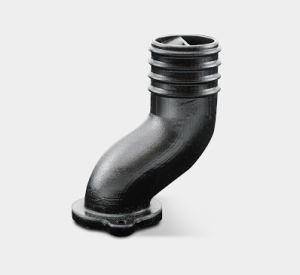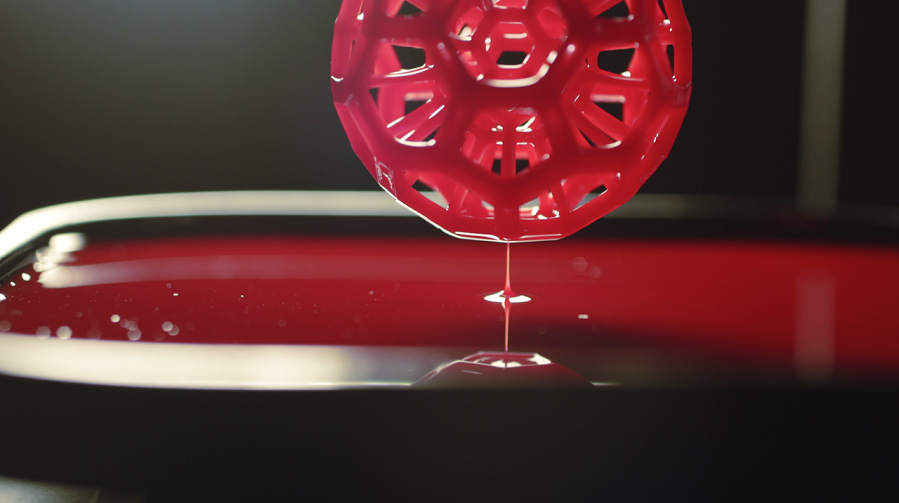 While the rest of the industry has been waiting eagerly, mere recipients of little morsels and teasers here and there regarding Carbon and their new CLIP technology, a most select early group of customers has been privy to what should prove to be the incredible new commercial 3D printer we’ve all been waiting for: the M1, just unveiled.
While the rest of the industry has been waiting eagerly, mere recipients of little morsels and teasers here and there regarding Carbon and their new CLIP technology, a most select early group of customers has been privy to what should prove to be the incredible new commercial 3D printer we’ve all been waiting for: the M1, just unveiled.
Most of the early customers were specifically chosen for the applications Carbon has seen their new CLIP technology working best in, and those sampling the M1 that we know of so far are Johnson & Johnson, Ford, and BMW. These early customers have been able to test 3D printed parts from the M1 regarding high-stress production applications in the automotive sector, as well as its uses in:
- Shortening product development cycles
- Addressing new lightweight, high-strength geometries
- Producing customized medical devices
Now, the M1 has officially been unveiled as Carbon’s first commercial 3D printer which will leverage, of course, CLIP technology as well as new engineering-grade materials. Many will be curious to see if this machine indeed follows through, delivering on the initial excitement and promises of exponentially high speeds matched with high resolution, superior mechanical qualities, and surface finish.
The goal? To accelerate manufacturing—literally.
“We’re excited to unveil our M1 machine and ground-breaking materials,” said Dr. Joseph DeSimone, CEO and Co-Founder of Carbon. “This product lays the groundwork for addressing major gaps in additive manufacturing as we work with our customers to continually innovate and push the boundaries of product design and production.”
We reported on Carbon’s new technology when they came out of stealth mode last year, giving details on the basics of how Continuous Liquid Interface Production (CLIP) technology would work, in essence sounding deceptively like SLA 3D printing–at first. The secret however, is that as CLIP technology works to harness the power of light and oxygen to cure a photosensitive resin, the layering method is eliminated. Just when the world was getting used to the idea of 3D printing and layers, it evolves into something completely different—and surely, this won’t be the last time. However, with CLIP it’s been projected that the speed, process, and new technology truly might live up to the word that we hear bandied about so often in regards to 3D printing: revolutionary!
This company managed to find substantial investors very early on, gain enormous amounts of beginning capital, and develop a completely unique technology all under the radar. To date, they have received $141 million in funding. Since then, news has trickled out (beyond the early testing partners) about a couple of partners who will be involved with the CLIP technology themselves, including Sculpteo, one of the first and only global 3D print platforms to use CLIP and have a Carbon 3D printer onsite, as well as Kodak who will employ their vast knowledge of chemicals to partner in making materials.
 It’s certainly no secret that speed has been an ongoing challenge in the evolution of 3D printing, along with a lack of integrity often showing up in the famously layered models. The promise with CLIP technology, and now the M1, is that there won’t be any sacrifice. Those designing prototypes and parts should be able to expect the required resolution, finish, and mechanical properties, as well as having the experience of using a powerful new machine with incredible precision, a host of new features, and most exciting—the capability to use a range of new resins.
It’s certainly no secret that speed has been an ongoing challenge in the evolution of 3D printing, along with a lack of integrity often showing up in the famously layered models. The promise with CLIP technology, and now the M1, is that there won’t be any sacrifice. Those designing prototypes and parts should be able to expect the required resolution, finish, and mechanical properties, as well as having the experience of using a powerful new machine with incredible precision, a host of new features, and most exciting—the capability to use a range of new resins.
The M1 will be able to collect over one million process control data points per day. With that, it can perform diagnostics remotely, help optimize prints, and even improve quality of prints over time. With an ‘internet-connected architecture,’ designers and engineers are promised ongoing and updated features, enhancements—as well as resins. Also according to Carbon, the interface is browser based and allows for printer operation within a network, which means that the user does not need to be concerned about exercises like software installations or worry about pesky issues with compatibility.
 Rarely has there been such an exciting new product on the scene, not to mention one that comes with an entire line of new materials. For the M1, seven proprietary resins are featured total, with the following new ones:
Rarely has there been such an exciting new product on the scene, not to mention one that comes with an entire line of new materials. For the M1, seven proprietary resins are featured total, with the following new ones:
- Rigid Polyurethanes – Carbon offers a family of three RPUs, which are promised to act as the stiffest, most versatile polyurethane based resin. They perform well under stress, combining strength, stiffness, and toughness. These properties make RPU particularly useful for consumer electronics, automotive, and industrial components where excellent mechanical properties are needed.
- Flexible Polyurethane – FPU is a semi-rigid material offering good impact, abrasion, and fatigue resistance. This versatile material was designed to withstand repetitive stress such as hinging mechanisms and friction fits.
- Elastomeric Polyurethane – EPU is a high performance polymeric elastomer, exhibiting elastic behavior under cyclic tensile and compressive loads. It’s useful for demanding applications requiring high elasticity, impact and tear resistance, where items like cushioning, gaskets, and seals are required.
- Cyanate Ester-based resin – this is a high performance material with heat deflection temperatures up to 219°C (426°F). Marked by excellent strength, stiffness and long-term thermal stability, CE is useful for under-the-hood applications, electronics, and industrial components.
- Prototyping Resin – PR prints quickly, has excellent resolution, and performs well enough to withstand moderate functional testing.
And adding to what is certainly a most interesting and exciting release all around, from a new commercial printer to new technology and materials, Carbon announces that another industry first will accompany the M1: a unique subscription-pricing mode. According to the undeniably innovative company, they are planning a new take on ‘capital equipment sales.’ With an annual subscription, the member companies can look forward to a comprehensive service team that will be hands-on and dedicated to addressing their needs, along with continual and seamless updates to the hardware. What are your thoughts on this new technology, finally unveiled? Discuss in the Carbon M1 3D Printer forum over at 3DPB.com.
[Images granted to 3DPrint.com courtesy of Carbon]
Subscribe to Our Email Newsletter
Stay up-to-date on all the latest news from the 3D printing industry and receive information and offers from third party vendors.
You May Also Like
Gorilla Sports GE’s First 3D Printed Titanium Cast
How do you help a gorilla with a broken arm? Sounds like the start of a bad joke a zookeeper might tell, but it’s an actual dilemma recently faced by...
Nylon 3D Printed Parts Made More Functional with Coatings & Colors
Parts 3D printed from polyamide (PA, Nylon) 12 using powder bed fusion (PBF) are a mainstay in the additive manufacturing (AM) industry. While post-finishing processes have improved the porosity of...
$25M to Back Sintavia’s Largest Expansion of Metal 3D Printing Capacity Since 2019
Sintavia, the digital manufacturing company specializing in mission-critical parts for strategic sectors, announced a $25 million investment to increase its production capacity, the largest expansion to its operations since 2019....
Velo3D Initiates Public Offering in a Bid to Strengthen Financial Foundations and Drive Future Growth
Velo3D (NYSE: VLD) has been among a number of publicly traded 3D printing firms that have attempted to weather the current macroeconomic climate. After posting a challenging financial report for 2023,...


































